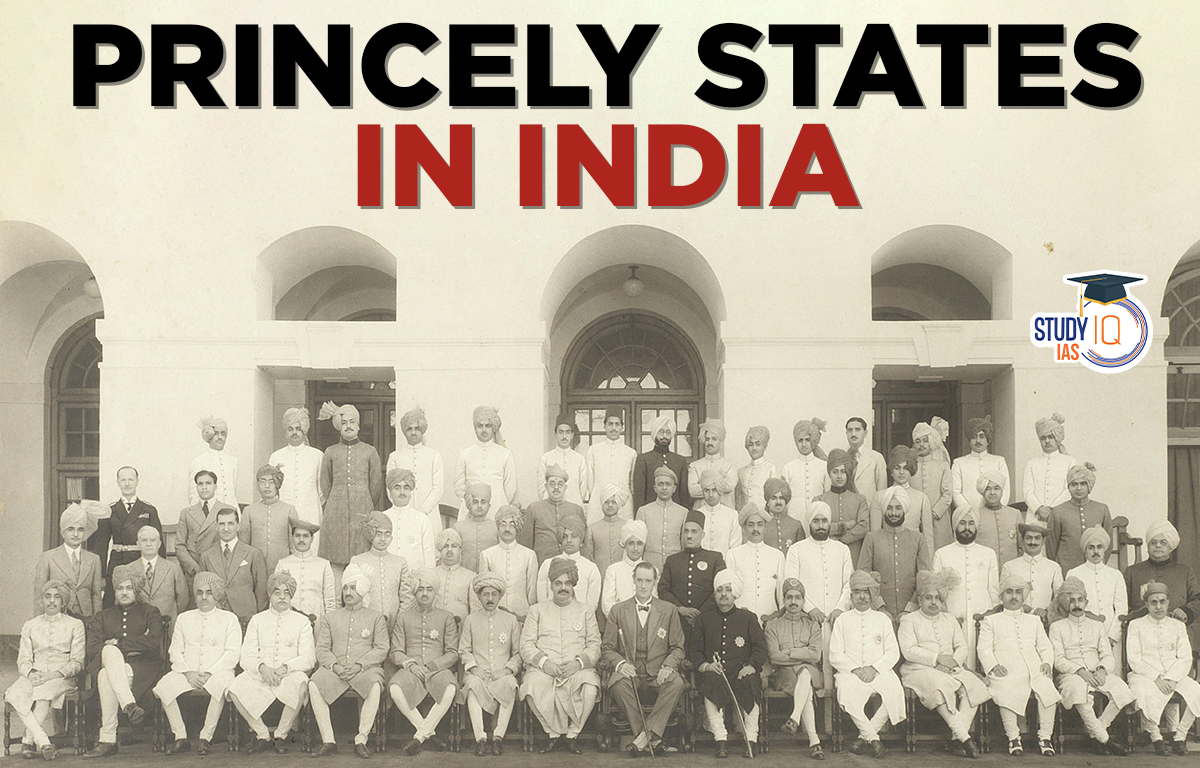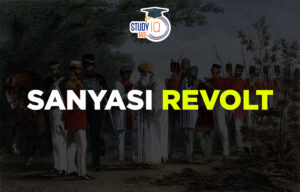Table of Contents
The Integration of Princely States after Independence: A total of 565 princely states had special relationships with and recognition from the British Raj. Before India gained independence, the British made the announcement that the Princely States would no longer be subject to British
administration. This implied that each of these 565 states would acquire legal independence. The Indian Independence Act (1947) established India and Pakistan as two distinct and separate dominions and gave the princely states three options: join India, join Pakistan, or maintain their independence.
The Integration of Princely States after Independence
The task of merging the princely realms fell to Sardar Vallabh Bhai Patel. Together with V.P. Menon, he developed a recipe to provide the monarchs. The official agreement that had to be signed by the governments of Pakistan and India and the prospective members was known as the Instrument of Accession. The primary concepts of the treaty were that the Government of India would only be in charge of foreign affairs, defence, and communications while the states would be in charge of all other domestic affairs.
Princely States in India before Independence
At the time of Indian independence in 1947, there were approximately 565 princely states; Sardar Vallabhai Patel worked to incorporate about 562 of them into India.
In accordance with the Indian Independence Act of 1947, princely kingdoms had the choice of joining either Pakistan or India, or remaining a sovereign independent state. At that time, there were more than 500 princely states, which together made up 28% of the population of pre-independent India and covered 48% of its land area. Despite not technically being a part of British India, these kingdoms were entirely obedient to the British Crown.
These nations served as the British Empire’s essential allies, preventing the growth of rival colonial powers and Indian nationalist inclinations. As a result, the princes received authority over their domains, but the British also gained the power to select ministers and request military assistance as needed. The daunting task of merging the princely states was handed to Sardar Vallabhbhai Patel, India’s first deputy prime minister and home minister, with the aid of V.P. Menon, the secretary of the Ministry of the States.
Patel maintained urging the princes to join India by appealing to their sense of patriotism and warning them of the potential for anarchy if they didn’t. As a payment to royal families in exchange for their consent to unite with India, he also popularised the idea of “privy purses.” The first states to join the union were Bikaner, Baroda, and a few more states from Rajasthan. Many other states were resolute about not joining India. While others wished to join Pakistan, some of them believed that now was the ideal time for them to create an independent state.
History of Integration of Princely States in India
Integration of Princely States: Jodhpur
The King of Jodhpur was persuaded to ally herself with India through the efforts of the Diwan of the neighboring state of Bikaner. This led to the signing of the Instrument of Accession with Jodhpur.
Integration of Princely States: Bhopal
The Nawab of Bhopal was asked to sign the Instrument of Accession, but Lord Mountbatten attempted to prevent the territory from joining the Union of India by arguing that the interests of Muslims in the area would be jeopardised as a result of the accession. The citizens of Bhopal, however, had come to the realisation that this was only being done to maintain the Nawab’s own authority in the state and had little to do with the actual interests of any community. The Nawab was therefore required to sign the Instrument of Accession with India.
Integration of Princely States: Travancore
Travancore (Kerala), which possessed abundant natural resources, was thought to be self-sufficient and hence desired to maintain its independence. Jawaharlal Nehru attempted to convince the Dewan of Travancore, C. P. Ramaswami Iyer, by inviting him to Delhi, but he refused to sign the Instrument of Accession. CP’s anti-communism stances made him unpopular with the Kingdom’s Communists as well. C. P. was the target of an attempted murder on July 25, 1947. He encouraged the King of Travancore to join India from his hospital bed, and the Instrument of Accession was subsequently signed.
Integration of Princely States: Junagarh
A Muslim ruler oversaw Junagarh, a princely realm with a large Hindu population. It had previously agreed to become a part of Pakistan’s territory by signing the agreement. However, India firmly believed that such a decision was in the people’s best interests. In order to organise a plebiscite, Shahnawaz Khan Bhutto’s Diwan of Junagarh was persuaded by V.P. Menon and V.B. Patel. But not before cutting off Junagadh’s air and land connections. The Nawab and his family escaped to Pakistan as a result of fighting between the Indian and Junaghadi troops. Zulfiqar Ali Bhutto’s father, His Dewan Sir Shah Nawaz Bhutto, made the decision to ask the Indian government to step in and sent a letter to Mr. Buch, the government of India’s regional commissioner for Saurashtra, to that effect. After the subsequent vote, Junagadh became a part of India.
Integration of Princely States: Hyderabad
Events like the Telangana insurrection, the movement of peasants led by communists against the Jagirdars and Talukdars, and the growth of Gandhian programmes like Prabhat Pheri and Khadi provided evidence that the power of Hyderabad’s rulers was transient. The Nawab of Hyderabad was successful in organising the Razakars militia and Ittehadul Muslameen, a group of conservative Muslims. They questioned the concept of India, therefore the Indian government eventually took police action, which resulted in Hyderabad’s surrender on September 17 of that year. The Nawab consented to India’s claim on Hyderabad. Read more about Hyderabad’s Subsidiary Alliance with the British at the provided link. In exchange, he was appointed the Rajpramukh (Gov.) of Hyderabad, a democratic state. Without experiencing a sense of dethronement, this can be referred to as a seamless transfer of power from the king to democracy.
Integration of Princely States: Kashmir
Kashmir was not a part of either India or Pakistan when the country gained its independence. When a segment of Pakistanis supporting their attack on Kashmir on October 22, 1947, Maharaja Hari Singh, the King of Kashmir, asked the Indian Government for assistance. Following the Maharaja’s Instrument of Accession signing, the Indian Army was dispatched to assist Kashmir. On December 31, 1948, India and Pakistan finally agreed to a cease-fire. India brought this issue before the UN. As a result, the UN requested that Pakistan disarm in 1951 and that India conduct a plebiscite in the region. Pakistan has not, however, withdrawn its forces from the region, and as a result, there is still a point of contention between the two countries. India refers to the territory held by Pakistan as “Pak occupied Kashmir,” while Pakistan refers to it as “Azad Kashmir.”
Preamble of Indian Constitution
How Many Princely States Joined India?
Sardar Vallabhbhai Patel was responsible for the accession of 562 princely kingdoms to India. Approximately 584 princely states, commonly referred to as “native states,” that were not officially and totally a part of British India existed in India prior to the Partition of India in 1947.
They had the option of joining either India or Pakistan or staying independent after gaining their independence. Sardar Vallabhai Patel integrated numerous princely kingdoms into the Union of India through diplomatic skill and tact.


 Maharashtra’s Mendrachi Vancharai Syst...
Maharashtra’s Mendrachi Vancharai Syst...
 Keeladi Excavation: Uncovering the Ancie...
Keeladi Excavation: Uncovering the Ancie...
 Sanyasi Revolt, Objectives, History, Rea...
Sanyasi Revolt, Objectives, History, Rea...





















